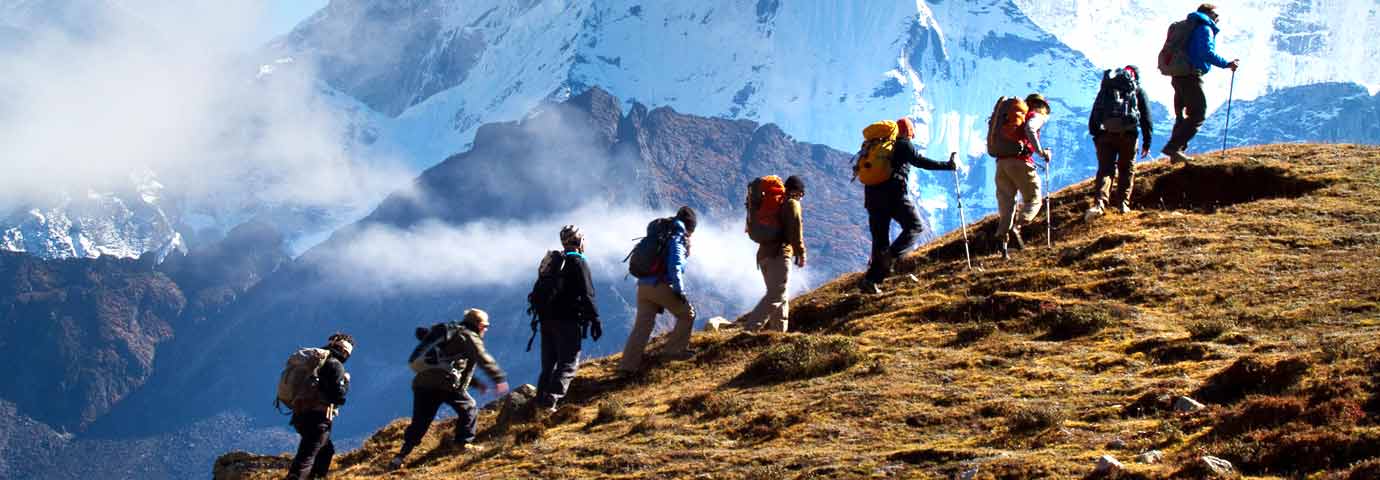
Along with Mighty Mt. Kanchenjunga (8586 m), the world’s third-highest mountain, you can witness Mt. Pandim (6691m), Mt. Kabur (7412 m), Mt. Simvo (6811m), Mt. Rathong (6678 m), Mt. Kokthang (6147 m) and Mt. Goecha Peak (5127 m).
On day 1 of the Dzongri trek, you will be transferred from the airport to Yuksom in a comfortable vehicle. Stay the night at a hotel here and recharge yourself for the trek.
Dzongri Trek, starting from Yuksom, covers 18 km through Siachen and Bakkhim to reach Tshoka. The trail passes through dense tropical forests of Kanchenjunga National Park, offering views of peaks. Clear rivers, waterfalls, hanging bridges, and white & red rhododendron flowers will also accompany you. The trek is particularly strenuous, as one climbs a gradient of 45 to 60 degrees.
The camps are set at Tshoka for the night. The following day, you will trek ahead towards Dzongri, where you can rest for the night and climb the peak the next morning. This will be when you can acclimatize as the onward trek is challenging and might be accompanied by Acute Mountain Sickness.
Once you reach Dzongri, the sunrise over the mountains will be the most mesmerizing sight. Once you are fulfilled, start the trek down. The trail is now easy, and you can reach Yuksom in a day or two. In conclusion, though short, the Dzongri trekking experience is adventurous and one of the memorable mountain expeditions in Sikkim.
March to June and September to November are the ideal time for Dzongri Trek. The weather is pleasant, and you can enjoy clear views of the mountains. However, avoid planning the trek during monsoon (June end to mid of September) as the trail becomes slippery, which sometimes leads to landslides and road blockage.
You will be provided with hotel rooms with basic amenities, tent camps, and traditional wooden huts on twin sharing basis.
If you visit between May and June, you will find pleasant weather. The temperatures will fluctuate between 15°C to 25°C during the day and between 8°C and 15°C at night. As you move further to Dzongri, the weather will get colder and dip to -2°C at night.
From mid-September to end-October, the weather will start to grow much cooler. As a result, there will be a dip in the temperature further from 2°C to 7°C and at Dzongri, from 3°C to -4°C.
Yes, Dzongri Trek is safe as you will have a guide with you. But at such height, there is always a chance of Acute Mountain Sickness. So, prepare yourself physically and mentally before you commence on Dzongri Trek.
As far as the women are concerned, this trek is completely safe. Vendors have the highest regard for the safety of women. Even if there’s only one girl on the trek, she will be provided a single tent. And there’s more, girls can share the tent. Besides, always be with the group to never leave on your own.
Moderate to Difficult. Thus, the Dzongri Trek is not recommended to novice trekkers. You must work on your physical fitness. Try running, hiking, or walking for hours. Besides, people face AMS (Acute Mountain Sickness) on this trek. Therefore, ensure to keep essential medications and keep hydrated.
Dzongri Trek starts from Yuksom. To reach here, flights are available to Bagdogra Airport in Siliguri, West Bengal, from major Indian cities like Kolkata, Mumbai, Delhi, Chennai, etc. Once you arrive at the airport, Tourism of India’s representative will assist you to Yuksom in a hygienic and comfortable vehicle.
Subscribe Our Newsletter for get latest updates
Follow us: